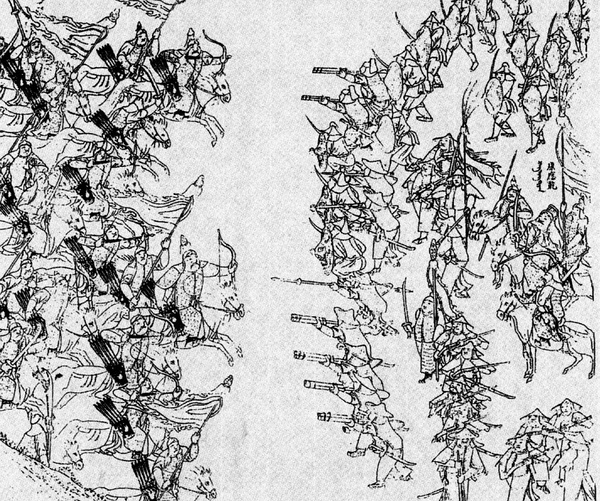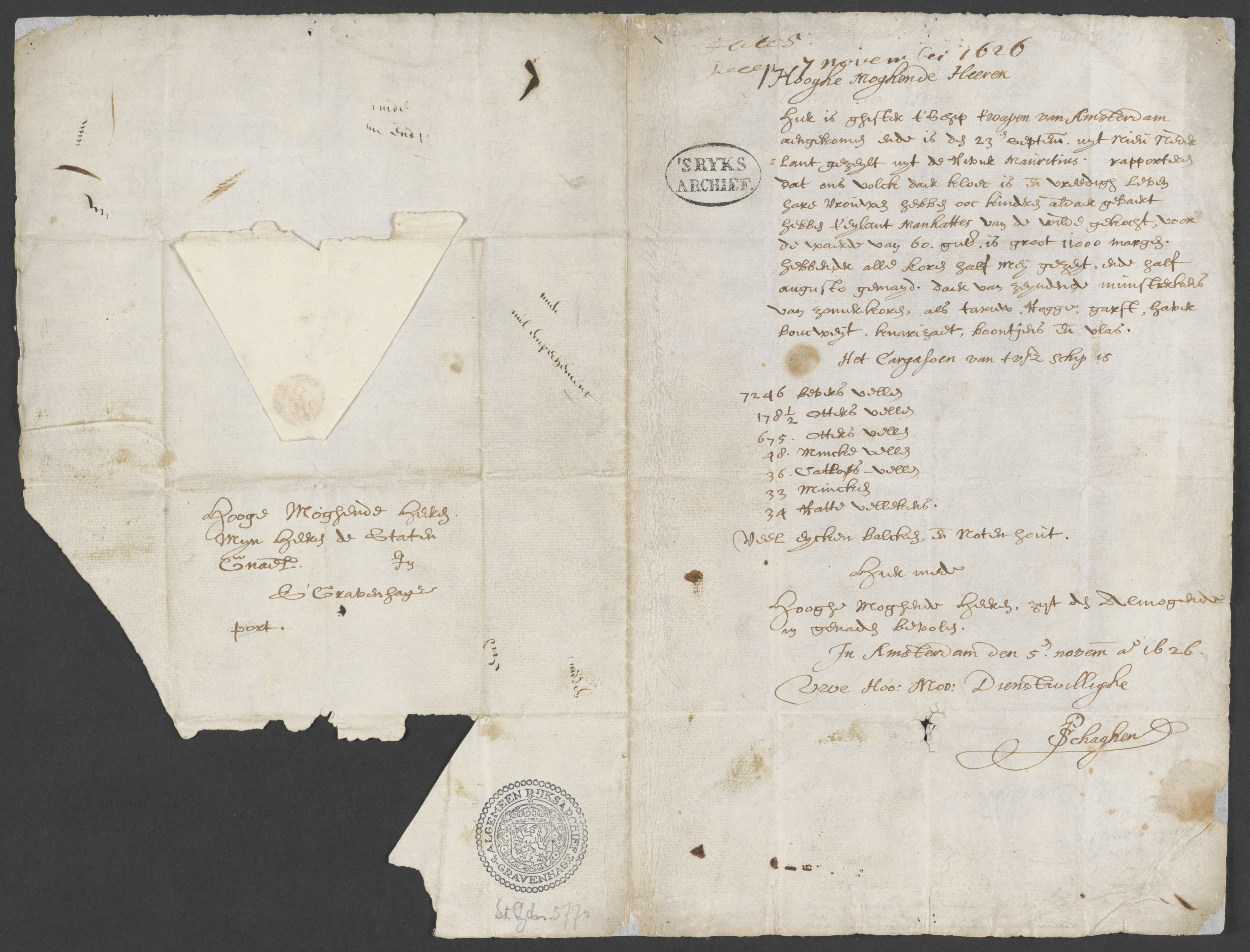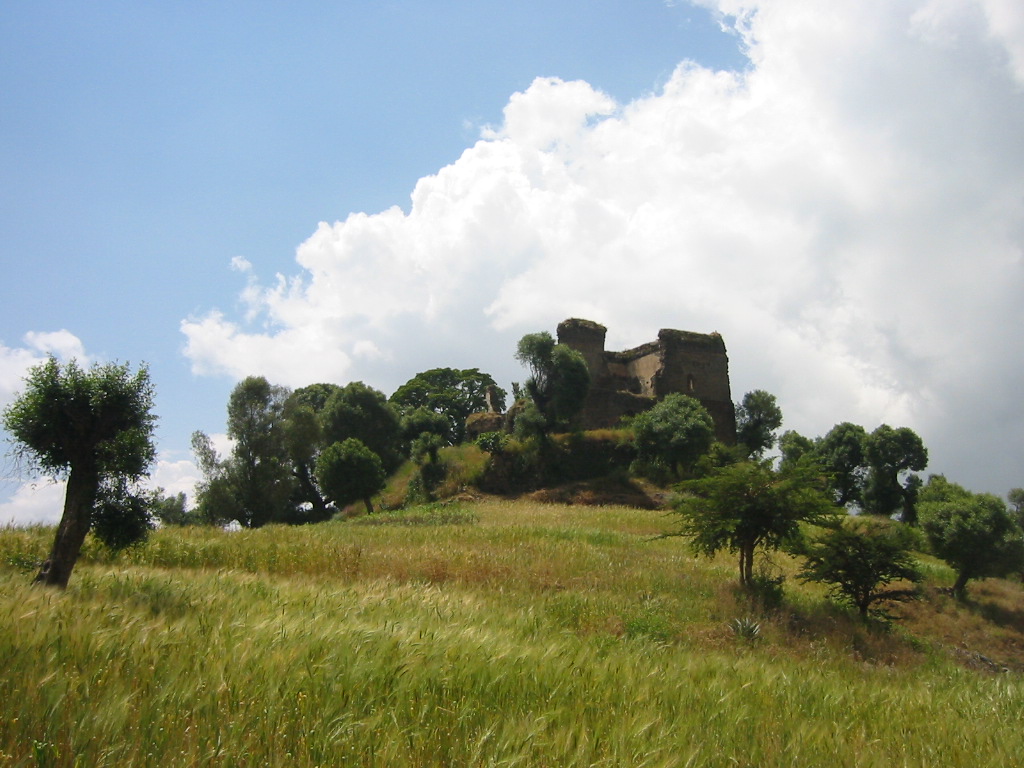|
1626
Events January–March * January 7 – Polish-Swedish War: Battle of Wallhof in Latvia – Gustavus Adolphus, King of Sweden, defeats a Polish army. * January 9 – Peter Minuit sails from Texel Island for America's New Netherland colony, with two ships of Dutch emigrants. * February 2 – King Charles I of England is crowned, but without his wife, Henrietta Maria, who declines to participate in a non-Catholic ceremony. * February 2– 10 – Battle of Ningyuan in Xingcheng, Liaoning, China: With a much smaller force, the Ming dynasty commander Yuan Chonghuan defeats the Manchu tribal leader Nurhaci, who dies soon after and is succeeded by Huang Taiji. * February 5 – The Huguenot rebels and the French government sign the Treaty of Paris, ending the second Huguenot rebellion. * February 11 – Emperor Susenyos of Ethiopia and Patriarch Afonso Mendes declare the primacy of the Roman See over the Ethiopian Church, and Roma ... [...More Info...] [...Related Items...] OR: [Wikipedia] [Google] [Baidu] |
Nurhaci
Nurhaci (14 May 1559 – 30 September 1626), also known by his temple name as the Emperor Taizu of Qing (), was a Jurchen chieftain who rose to prominence in the late 16th century in Manchuria. A member of the House of Aisin-Gioro, he reigned as the founding khan of the Later Jin dynasty of China from 1616 to 1626. Nurhaci reorganized and united various Jurchen tribes (the later "Manchu"), consolidated the Eight Banners military system, and eventually launched attacks on both the Ming and Joseon dynasties. His conquest of Ming dynasty's northeastern Liaodong region laid the groundwork for the Qing conquest of the Ming by his descendants, who founded the Qing dynasty in 1636. He is also generally credited with ordering the creation of a new written script for the Manchu language based on the Mongolian vertical script. Name and titles Nurhaci is written as in Manchu language. Some suggest that the meaning of the name in the Manchu language is "the skin of a wild boar", ot ... [...More Info...] [...Related Items...] OR: [Wikipedia] [Google] [Baidu] |
Peter Minuit
Peter Minuit (between 1580 and 1585 – August 5, 1638) was a Walloons, Wallonian merchant from Tournai, in present-day Belgium. He was the 3rd Director of New Netherland, Director of the Dutch North American colony of New Netherland from 1626 until 1631, and 3rd Governor of New Netherland. He founded the Sweden, Swedish colony of New Sweden on the Delaware Peninsula in 1638. Minuit is generally credited with orchestrating the purchase of Manhattan Island for the Dutch East India Company from the Lenape Native Americans in the United States, Indians. Manhattan later became the site of the Dutch city of New Amsterdam, and the borough of Manhattan of modern-day New York City. A common account states that Minuit purchased Manhattan for $24 worth of trinkets. A letter written by Dutch merchant Peter Schaghen to directors of the Dutch East India Company stated that Manhattan was purchased for "60 Guilder, guilders worth of trade", an amount worth ~$1,143 U.S. dollars as of 2020. Biog ... [...More Info...] [...Related Items...] OR: [Wikipedia] [Google] [Baidu] |
Battle Of Wallhof
Battle of Wallhof ( lv, Valles kauja, also known as Battle of Walmozja) was a battle fought between Sweden and the Polish-Lithuanian Commonwealth on 7 January 1626. History Swedish forces consisting of 3,100 men (2,100 of them cavalry) with six guns under Gustavus II Adolphus ambushed and took by surprise a Polish-Lithuanian force of 2,000–7,000 men (sources differ) with three guns under Jan Stanisław Sapieha. Polish-Lithuanian casualties amounted to between 1,000 and 2,300 dead, wounded or captured,Wallhof i Nordisk familjebok (2:a upplagan, 1921) and their commander collapsed from mental illness after this defeat.The Swedish king Gustav claimed: "not a single man is missing; everyone is where they should be" which is hard to believe, but to have suffered very small casualties is most likely true. In the battle Gustavus Adolphus' reformed tactics, utilising close cooperation between infantry and cavalry, were tried for the first time. It was also the first time the Swed ... [...More Info...] [...Related Items...] OR: [Wikipedia] [Google] [Baidu] |
Battle Of Ningyuan
The Battle of Ningyuan () was a battle between the Ming dynasty and the Later Jin dynasty in 1626. The Later Jin had been waging war on the Ming for several years, and their leader Nurhaci had deemed Ningyuan to be a suitable target for his attack, in part due to advice from a Ming defector, Li Yongfang. Later Jin failed to take the city and Nurhaci was wounded in the assault, dying eight months later. The Ming emerged victorious, marking a temporary resurgence of the Ming army after an eight-year-long series of defeats. Background The Ming had suffered a series of defeats against the Jurchens prior to 1626 and lost the key city of Shenyang in 1621 and the port city of Lüshun in 1625. Part of the Ming army's new strategy of defense was to develop Ningyuan into a military stronghold. Yuan Chonghuan, with the support of Sun Chengzong, was assigned the task of conducting a major strengthening of Ningyuan's defenses in anticipation of a Jurchen attack. However, the defensive pre ... [...More Info...] [...Related Items...] OR: [Wikipedia] [Google] [Baidu] |
Huang Taiji
Hong Taiji (28 November 1592 – 21 September 1643), also rendered as Huang Taiji and sometimes referred to as Abahai in Western literature, also known by his temple name as the Emperor Taizong of Qing, was the second khan of the Later Jin dynasty (reigned from 1626 to 1636) and the founding emperor of the Qing dynasty (reigned from 1636 to 1643). He was responsible for consolidating the empire that his father Nurhaci had founded and laid the groundwork for the conquest of the Ming dynasty, although he died before this was accomplished. He was also responsible for changing the name of the Jurchen ethnicity to "Manchu" in 1635, and changing the name of his dynasty from "Great Jin" to "Great Qing" in 1636. The Qing dynasty lasted until 1912. Names and titles It is unclear whether "Hong Taiji" was a title or a personal name. Written ''Hong taiji'' in Manchu, it was borrowed from the Mongolian title '' Khong Tayiji''. That Mongolian term was itself derived from the Chinese '' ... [...More Info...] [...Related Items...] OR: [Wikipedia] [Google] [Baidu] |
Charles I Of England
Charles I (19 November 1600 – 30 January 1649) was King of England, Scotland, and Ireland from 27 March 1625 until his execution in 1649. He was born into the House of Stuart as the second son of King James VI of Scotland, but after his father inherited the English throne in 1603, he moved to England, where he spent much of the rest of his life. He became heir apparent to the kingdoms of England, Scotland, and Ireland in 1612 upon the death of his elder brother, Henry Frederick, Prince of Wales. An unsuccessful and unpopular attempt to marry him to the Spanish Habsburg princess Maria Anna culminated in an eight-month visit to Spain in 1623 that demonstrated the futility of the marriage negotiation. Two years later, he married the Bourbon princess Henrietta Maria of France. After his 1625 succession, Charles quarrelled with the English Parliament, which sought to curb his royal prerogative. He believed in the divine right of kings, and was determined to govern acc ... [...More Info...] [...Related Items...] OR: [Wikipedia] [Google] [Baidu] |
Henrietta Maria
Henrietta Maria (french: link=no, Henriette Marie; 25 November 1609 – 10 September 1669) was Queen of England, Scotland, and Ireland from her marriage to King Charles I on 13 June 1625 until Charles was executed on 30 January 1649. She was mother of his sons Charles II and James II and VII. Contemporaneously, by a decree of her husband, she was known in England as Queen Mary, but she did not like this name and signed her letters "Henriette R" or "Henriette Marie R" (the "R" standing for ''regina'', Latin for "queen".) Henrietta Maria's Roman Catholicism made her unpopular in England, and also prohibited her from being crowned in a Church of England service; therefore, she never had a coronation. She immersed herself in national affairs as civil war loomed, and in 1644, following the birth of her youngest daughter, Henrietta, during the height of the First English Civil War, was compelled to seek refuge in France. The execution of Charles I in 1649 left her impoverished. S ... [...More Info...] [...Related Items...] OR: [Wikipedia] [Google] [Baidu] |
Treaty Of Paris (1626)
The Treaty of Paris (1626) was a peace agreement between king Louis XIII and the Huguenots following the outbreak of the Second Huguenot rebellion and the Capture of Ré island. The Treaty of Paris was signed between the city of La Rochelle and Louis XIII on 5 February 1626, preserving religious freedom but imposing some guaranties against possible future upheavals: La Rochelle was prohibited from keeping a war fleet and had to destroy a fort in Tasdon. The contentious Fort Louis under Royal control near the western gate of the city was supposed to be destroyed "in reasonable time". Notes 1626 in France 1626 treaties Treaties of the Kingdom of France History of Paris Huguenot rebellions 17th century in Paris {{france-hist-stub ... [...More Info...] [...Related Items...] OR: [Wikipedia] [Google] [Baidu] |
Huguenot Rebellion
The Huguenot rebellions, sometimes called the Rohan Wars after the Huguenot leader Henri de Rohan, were a series of rebellions of the 1620s in which French Calvinist Protestants (Huguenots), mainly located in southwestern France, revolted against royal authority. The uprising occurred a decade after the death of Henry IV who, himself originally a Huguenot before converting to Catholicism, had protected Protestants through the Edict of Nantes. His successor Louis XIII, under the regency of his Italian Catholic mother Marie de' Medici, became more intolerant of Protestantism. The Huguenots tried to respond by defending themselves, establishing independent political and military structures, establishing diplomatic contacts with foreign powers, and openly revolting against central power. The Huguenot rebellions came after two decades of internal peace under Henry IV, following the intermittent French Wars of Religion of 1562–1598. First Huguenot rebellion (1620–1622) The fi ... [...More Info...] [...Related Items...] OR: [Wikipedia] [Google] [Baidu] |
Gustavus Adolphus
Gustavus Adolphus (9 December N.S 19 December">Old_Style_and_New_Style_dates.html" ;"title="/nowiki>Old Style and New Style dates">N.S 19 December15946 November Old Style and New Style dates">N.S 16 November] 1632), also known in English as Gustav II Adolf or Gustav II Adolph, was King of Sweden from 1611 to 1632, and is credited for the rise of Swedish Empire, Sweden as a great European power ( sv, Stormaktstiden). During his reign, Sweden became one of the primary military forces in Europe during the Thirty Years' War, helping to determine the political and religious balance of power in Europe. He was formally and posthumously given the name Gustavus Adolphus the Great ( sv, Gustav Adolf den store; la, Gustavus Adolphus Magnus) by the Riksdag of the Estates in 1634. He is often regarded as one of the greatest military commanders in modern history, with use of an early form of combined arms. His most notable military victory was the Battle of Breitenfeld in 1631. With his ... [...More Info...] [...Related Items...] OR: [Wikipedia] [Google] [Baidu] |
Ming Dynasty
The Ming dynasty (), officially the Great Ming, was an Dynasties in Chinese history, imperial dynasty of China, ruling from 1368 to 1644 following the collapse of the Mongol Empire, Mongol-led Yuan dynasty. The Ming dynasty was the last orthodox dynasty of China ruled by the Han Chinese, Han people, the majority ethnic group in China. Although the primary capital of Beijing fell in 1644 to a rebellion led by Li Zicheng (who established the short-lived Shun dynasty), numerous rump state, rump regimes ruled by remnants of the House of Zhu, Ming imperial family—collectively called the Southern Ming—survived until 1662. The Ming dynasty's founder, the Hongwu Emperor (r. 1368–1398), attempted to create a society of self-sufficient rural communities ordered in a rigid, immobile system that would guarantee and support a permanent class of soldiers for his dynasty: the empire's standing army exceeded one million troops and the naval history of China, navy's dockyards in Nanjin ... [...More Info...] [...Related Items...] OR: [Wikipedia] [Google] [Baidu] |
Susenyos Of Ethiopia
Susenyos I ( gez, ሱስንዮስ ; circa 1571-1575 – 17 September 1632), also known as Susenyos the Catholic, was Emperor of Ethiopia from 1606 to 1632, and a member of the Solomonic dynasty. His throne names were Seltan Sagad and Malak Sagad III. He was the son of ''Abeto'' Fasil, as well as the grandson of ''Abeto'' Yakob and the great-grandson of Dawit II. As a result, while some authorities list Susenyos as a member of the Solomonic dynasty, others consider him—rather than his son, Fasilides—as the founder of the Gondar line of the dynasty (which is, however, ultimately a subset of the Solomonic dynasty). The life of Susenyos is known through his chronicle, written by several official writers (''sehafe te’ezaz''). The Jesuits, who were closely associated with Susenyos’s reign, also left numerous documents on their mission in Ethiopia. Manuel de Almeida, a Portuguese Jesuit who lived in Ethiopia during Susenyos' reign, described the emperor as tall with the feat ... [...More Info...] [...Related Items...] OR: [Wikipedia] [Google] [Baidu] |







.jpg)

